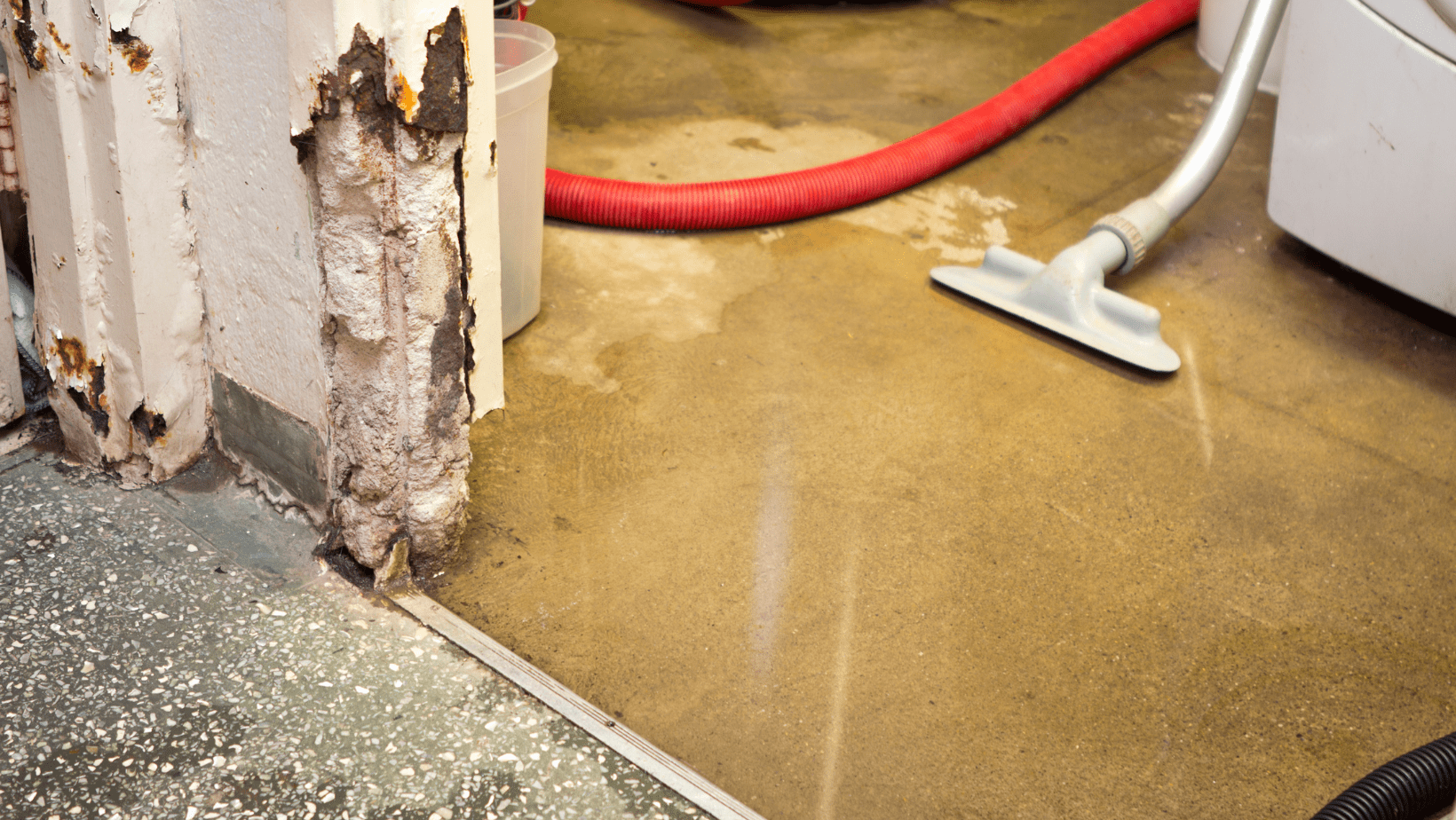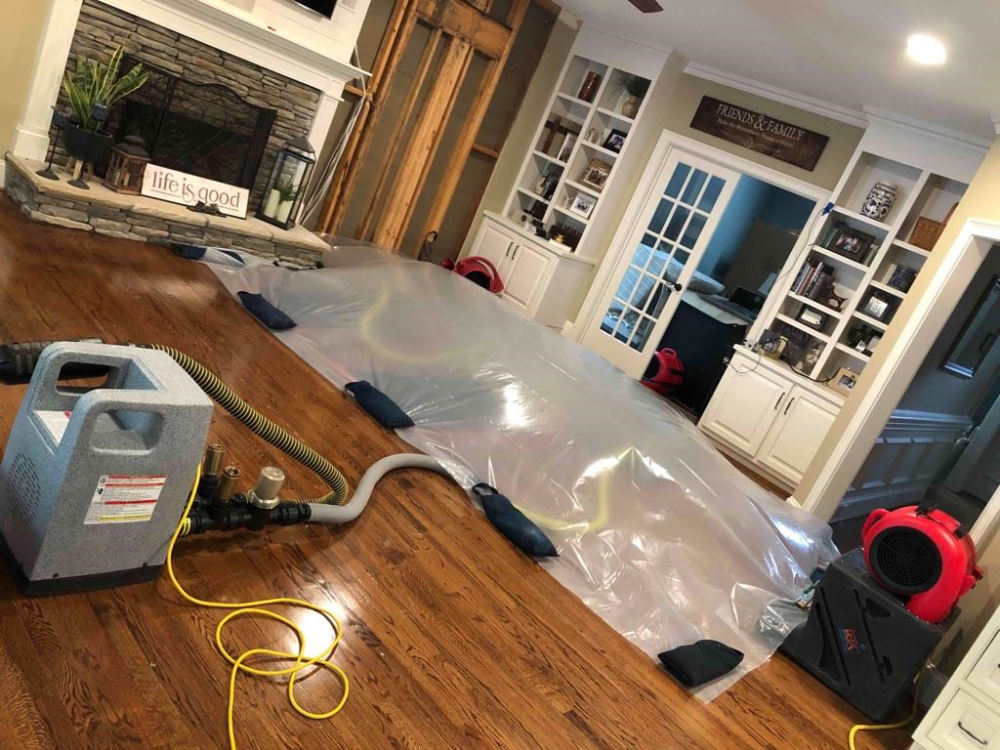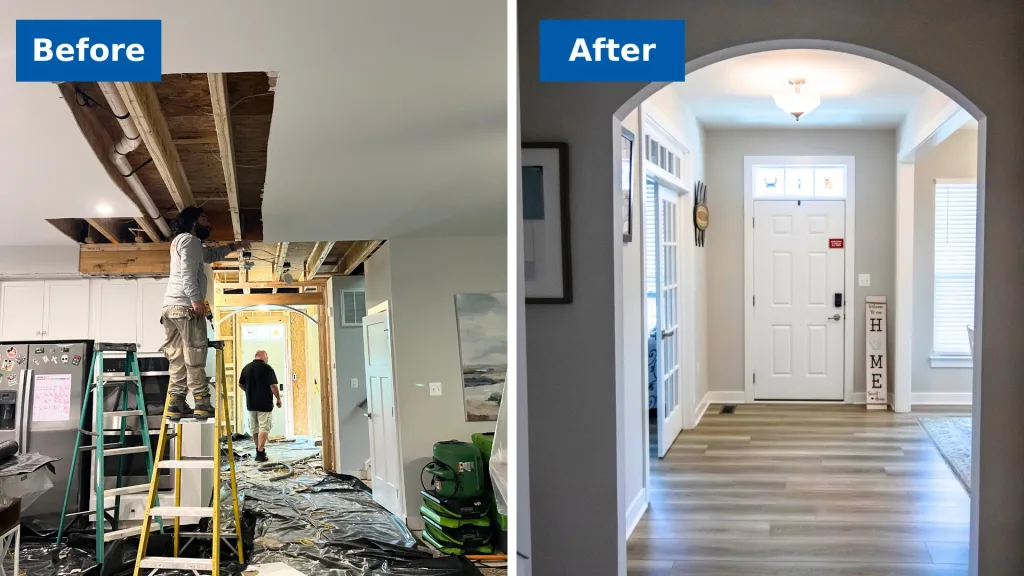What Happens If You Postpone Flood Damage Restoration? The Hidden Costs Explained
Essential Actions to Comply With for Effective Water Damage Reconstruction in your house
When confronted with water damages in your home, recognizing the vital steps for reliable remediation can make all the distinction. You need to examine the damages and warranty safety prior to tackling the trouble. Stopping the resource of water is essential, however it's simply the start. As soon as you've managed that, there's a collection of actions you have to require to safeguard your home from additional problems. Allow's discover what you should do following.
Assess the Damages
The initial action is to examine the damage completely when you find water damages in your home. Start by determining the source of the water intrusion. Check for leakages, burst pipelines, or various other concerns triggering the problem. Next off, examine the influenced locations for visible indications of damage, consisting of bending, staining, or mold growth. Don't neglect to look in hidden spots like behind walls or under floor covering, as water can leak into these locations unnoticed.Document the damage by taking clear photos and notes. This will certainly assist you when reviewing the scenario with your insurance coverage company or remediation experts. Focus on the kind of materials affected, as different products require different restoration techniques. Finally, evaluate the degree of the damage. Is it substantial or small? Understanding the range will lead you in making a decision whether to manage it on your own or employ the specialists for a much more substantial remediation process.

Make certain Safety and security
Before you start any type of repair job, assuring your security is vital. Initially, assess the problem of your home. If the water's deep or if you see electrical risks, don't go into the location. Switch off the electrical energy and gas supply to avoid crashes. Wear safety equipment like masks, gloves, and boots to protect yourself from impurities or mold.It's important to remain aware of your surroundings; look for slippery surface areas and sharp items. Treat it as dangerous waste if the water is from a sewer backup. Maintain pet dogs and children away from affected locations to stay clear of exposure.Once you have actually taken these preventative measures, you can continue with the reconstruction process. Bear in mind, your safety and security comes first, and if you're ever before not sure, it's ideal to get in touch with a specialist. Taking these steps will certainly help assure you prepare to take on the restoration safely and properly.
Quit the Source of Water
After guaranteeing your safety, the following action is to stop the resource of water. Identify where the leak is coming from. Maybe a ruptured pipeline, a malfunctioning home appliance, and even hefty rain going into via a harmed roofing system. If it's a pipes issue, turn off the major water to your home to prevent more flooding. For devices, unplug them and shut down their water supply valves.If the source is outside, like rain, attempt to divert it far from your home making use of sandbags or various other obstacles. For minor leakages, you may be able to use tape or a sealer temporarily until a professional can repair it. Remember, addressing the source swiftly is important to decreasing damages and stopping mold and mildew development. When you have actually quit the water, you'll remain in a far better placement to proceed to the following action in the restoration process.

Remove Excess Water
Act quickly to get rid of excess water, as standing water can result in a lot more considerable damage and mold and mildew development. Gather your tools: a wet/dry vacuum, pails, and towels. You can use towels to saturate up the wetness if the water is superficial. For much deeper water, a wet/dry vacuum is your best choice. Ensure to clear the vacuum frequently to prevent overflow.If the water is contaminated, like from a sewer back-up, use protective gear, including masks and gloves, to keep yourself safe. As soon as you've gotten rid of as much water as feasible, examine for hidden pockets of dampness in edges and under furniture, as these can harbor mold.Don' t forget to switch off electrical appliances and power outlets in wet areas to stop threats. This initial action is crucial in minimizing damage and establishing the phase for a successful restoration process.
Dry and Dehumidify the Area
It's important to completely dry and evaporate the area extensively as soon as you've eliminated the excess water. Start by utilizing dehumidifiers effectively to draw moisture out of the air and protect against mold development. Watch on moisture levels to ensure the space dries out entirely.
Remove Standing Water
To efficiently take on water damages, you need to focus on removing standing water as swiftly as possible. Begin by gathering required devices, like a wet/dry vacuum cleaner or a pump, depending on the volume of water. If the water is superficial, a vacuum cleaner should suffice. For larger quantities, a pump is much more reliable. While functioning, ensure to put on protective equipment to maintain yourself risk-free from pollutants. As you remove the water, pay focus to hidden areas like under furnishings or in edges where water could accumulate. Your space will begin to dry out when you have actually eliminated the majority. This step is essential, as sticking around water can lead to mold and mildew development and much more considerable damage.
Use Dehumidifiers Efficiently
Just how can you effectively utilize dehumidifiers to completely dry and dehumidify your area? Begin by placing your dehumidifier in one of the most damaged location, preferably where water damages is most severe. See to it to close all doors and windows to create a covered environment. Activate the dehumidifier and established it to the ideal humidity level, normally around 30-50%. Empty the water collection storage tank regularly, or consider using a model with a constant water drainage alternative for convenience. If feasible, use followers to enhance air movement, assisting the dehumidifier work extra successfully. Maintain the dehumidifier running until you're certain that the location is completely dried out, protecting against mold and mildew development and extra damage (Flood Damage Restoration). This action is important for effective water damage reconstruction
Screen Moisture Levels
Surveillance moisture degrees is important during the drying process, as it aids assure your area continues to be devoid of excess moisture. Buy a reputable hygrometer to track moisture Water Damage Repair precisely. Preferably, you intend to maintain degrees in between 30% and 50%. You may need to readjust your fans or dehumidifiers to boost air movement if humidity analyses rise over this array. Check the analyses frequently, particularly in locations susceptible to moisture, like restrooms or cellars. Consider enhancing ventilation or utilizing additional dehumidifiers if you discover consistent high moisture. Remaining on top of these levels not only speeds up the drying out process yet likewise avoids mold growth, guaranteeing your home keeps risk-free and comfortable.
Tidy and Disinfect Affected Surfaces

Restore and Fix Your Home
After cleansing and disinfecting the influenced areas, it's time to bring back and repair your home. Begin by assessing the damage. Look for architectural issues, like deteriorated wall surfaces or floors, and address any essential fixings. Changing damaged drywall or floor covering is crucial for both appearances and safety.If your furnishings or items were impacted, consider whether they can be restored or require replacement. Tidy or professionally restore things where possible.Next, touch and paint walls up any kind of locations that need focus. This not only improves look yet also safeguards surfaces from future water damage.Don' t forget to inspect your pipes and devices for leaks, guaranteeing every little thing's operating properly. Think about installing a dehumidifier to avoid future moisture concerns. By taking these actions, you'll recover your home to its former glory and develop a more secure living atmosphere.
Frequently Asked Concerns
For How Long Does Water Damage Repair Typically Take?
Water damages reconstruction usually takes anywhere from a couple of days to several weeks, relying on the level of the damages (Water Damage Repair). You'll intend to examine the situation quickly to lessen further difficulties and assure appropriate remediation
Will My Insurance Coverage Cover Water Damages Repair Costs?
Your insurance policy might cover water damages reconstruction costs, however it relies on your plan. Inspect your coverage details and contact your insurance agent to clarify what's consisted of and what you require to submit a claim.
Can I Handle Water Damage Restoration Myself?
You can manage water damage repair on your own, however it's crucial to assess the scenario. If it's extensive, you might wish to call specialists. Always prioritize safety and security and assure you have actually got the right devices.
What Are the Indicators of Hidden Water Damages?
You could notice indications of hidden water damages like warped walls, stuffy smells, or discoloration. If your floors feel squishy or you spot mold, it's time to investigate additionally before the situation intensifies.
How Can I Avoid Future Water Damage in My Home?
To avoid future water damages in your home, you should frequently examine pipes, seal cracks, preserve rain gutters, and assurance proper drain. Installing a sump pump and wetness obstacles can also assist keep your area dry. When you discover water damages in your home, the initial step is to assess the damage extensively. Act promptly to get rid of excess water, as standing water can lead to more comprehensive damage and mold and mildew growth. To properly tackle water damages, you need to focus on removing standing water as swiftly as feasible. As you remove the water, pay interest to concealed locations like under furniture or in corners where water might gather. Water damages remediation usually takes anywhere from a couple of days to several weeks, depending on the degree of the damage.